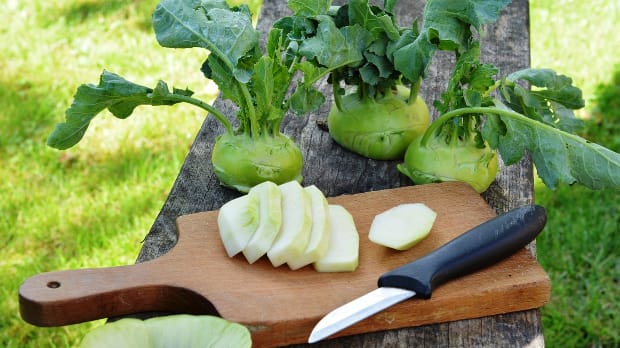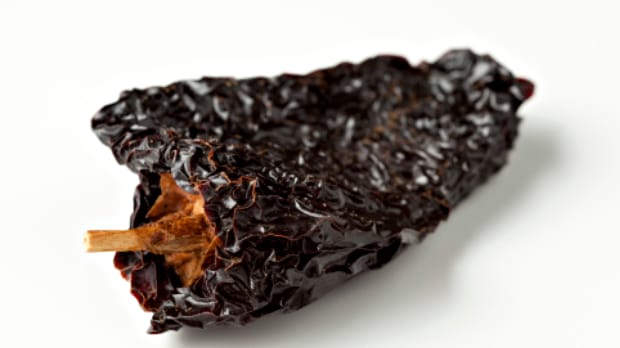What is Kohlrabi?
Kohlrabi, pronounced [kohl-RAH-bee], is a type of vegetable that has been loved by Europeans for many years. However, it is just starting to make its way into the hearts and kitchens of Americans. Sometimes referred to as cabbage turnip, Kohlrabi has a unique appearance with a bulbous stem that grows above the ground. The stem is surrounded by edible green leaves that are perfect for adding some color to your dish. With its mild and slightly sweet taste, Kohlrabi is a perfect addition to your salads, soups, and even baked dishes. It is a great alternative to traditional root vegetables like potatoes or turnips.
So, if you’re looking for a new vegetable to add to your diet, why not give Kohlrabi a try? It’s versatile, tasty, and has plenty of health benefits. And who knows, it might just become your new favorite!
What are the Nutritional Benefits?

Looking for a new vegetable to add to your diet? Kohlrabi might just be what you’re looking for! This round veggie may not be as well-known as other produce, but it offers a wide range of nutritional benefits. For starters, it is a great source of vitamin C, which is essential for a healthy immune system. It also contains fiber, which aids digestion and can help you feel full and satisfied after a meal. Additionally, this large stem contains important minerals like potassium and calcium, helping to support bone health.
But that’s not all! Kohlrabi is also a low-calorie option that can be incorporated into a variety of dishes. Experiment with adding it to salads, stir-fries, and even roasted as a side dish. So why not give this tasty veggie a try? Not only is it a delicious addition to your meals, but it also offers a range of nutritional benefits to support your overall health and well-being.
Types Available

Kohlrabi is a unique type of produce that’s commonly used in cooking, but not everyone is familiar with the different types available. There are typically two types that you may come across: green and purple. The green variety has a light green skin and a pale, almost white, interior, while the purple variety has a deep purple skin and a bright white interior. Both colors of the bulb vegetable taste about the same with a crunchy texture and a mild, slightly sweet flavor that make them perfect for salads, slaws, and stir-fries. So whether you’re a seasoned chef or a curious food enthusiast, trying out different types of kohlrabi can be a fun way to add some variety to your meals.
What are the Best Uses?
Have you ever heard of kohlrabi? It’s a lesser-known member of the cabbage family, but don’t let that fool you. This versatile vegetable has a ton of potential in the kitchen. So, what are the best uses for this interesting looking bulb? First of all, you can eat both the bulb and the leaves of this plant. The bulb has a crunchy texture and a flavor similar to that of broccoli stems or turnips. It’s great raw in salads or sliced up into sticks for a healthy snack. Kohlrabi can also be roasted, stir-fried, or even pureed for soups or dips.
As for the leaves, they can be cooked just like any other green. Try sautéing them with garlic and olive oil or tossing them into a frittata. You could also blend them into a smoothie for added nutrients.
Overall, kohlrabi is a nutritious and delicious addition to any meal. It’s packed with fiber, vitamin C, and potassium, making it a great choice for a healthy diet. So next time you’re at the farmers’ market, don’t be afraid to pick up some and get creative in the kitchen!
How do You Store Kohlrabi?
This unique vegetable that can be intimidating to store properly. But fear not, my friends! I have some tips to help keep your kohlrabi fresh and delicious. Firstly, it’s important to know that kohlrabi is actually the stem of the plant, not the root. It’s a member of the brassica family, like cabbage and broccoli.
To store kohlrabi, start by trimming off any leaves and stems. Next, place the bulb in a plastic bag in the refrigerator. It will last longer if the bag perforated. The leaves and stems are best if you eat them right away, just like other greens. If you’re not going to eat them right away, store the leaves in a zip top bag with a damp paper towel. The ideal temperature for kohlrabi is between 32-40°F, so make sure your fridge is set to the right temperature.
Kohlrabi will last for up to two weeks in the refrigerator if stored properly. The leaves will keep for about a week. If you have any leftover that you’re not going to use right away, you can also blanch and freeze it for later use. In conclusion, storing kohlrabi is simple and easy. Trim it, bag it, and chill it in the fridge. Now you’re armed with the knowledge to keep your kohlrabi fresh and delicious for your next recipe!
How to Prepare Kohlrabi
Have you ever come across Kohlrabi at the farmer’s market or grocery store? It might look like an alien vegetable with its bulbous shape and long stems, but once you give it a try, you might be surprised by its mild and slightly sweet taste. To prepare this interesting vegetable, first, cut off the stems and leaves. Save the leaves and stems and eat them like you would other greens. For the bulb, peel off the tough outer skin. You can use a knife or a vegetable peeler for this task. Once you’ve peeled the skin off, you can chop the bulb into small bite-sized pieces.
Now, you can enjoy Kohlrabi in a variety of ways. You can eat it raw, like a crunchy snack, or add it to a salad for an extra crunch. The bulb can also be cooked by steaming, roasting, or boiling. One popular recipe is to make Kohlrabi fries by slicing them into thin strips, seasoning with salt and pepper, and then baking in the oven until golden brown. Give it a try and see how this peculiar looking vegetable can spice up your meals!
When is Kohlrabi in Season?
Are you a fan of kohlrabi? This underrated vegetable is a must-try, and you may be wondering when is the best season to get your hands on it. The truth is, the bulbous stem thrives in cool weather, making it a perfect fall or early spring crop. If you live in a region with a mild climate, you can plant seeds in late winter or early spring for a spring harvest. However, if you live in a colder area, it’s best to wait until the fall season. Kohlrabi typically takes around 60-70 days to mature, so plan your planting accordingly.
Kohlrabi is a versatile veggie that can be baked, sautéed, or even enjoyed raw in salads. It’s low in calories and high in fiber, making it a great addition to any healthy lifestyle. Regardless of the season, make sure to choose fresh, firm kohlrabi with smooth skin and no blemishes. This will ensure the best flavor and texture. So next time you’re at the farmer’s market or grocery store, keep an eye out for this unique and delicious veggie. Your taste buds and health will thank you!
Improve Your Health With Seasonal Eating
What to Serve Kohlrabi With?
- Olive Oil and Sea Salt
- Apples
- Herbs and Garlic
- Sour Cream
- Leeks
- Celery
- Cheese
- Ginger and Soy Sauce
- Tomatoes
- Feta
What Traditional Cuisines Use Kohlrabi?
Kohlrabi is a versatile vegetable that is used in many traditional cuisines around the world. It is most popularly used in German, Austrian, and Czech cuisines. It can be boiled, steamed, roasted, or eaten raw. Both the bulb and leaves are often used in soups, stews, salads, stir-fries, and as a side dish. The tasty vegetable is also commonly pickled and used as a condiment.
Tasty Recipes
- Crisp Apple & Kohlrabi Salad
- Warm Kohlrabi Salad
- Kohlrabi & Leek Soup
- Kohlrabi Fritters Recipe
- Sautéed Kohlrabi (with the greens)
Key Takeaways
- Choose kohlrabi with firm, smooth skin and no brown spots.
- Peel and cut the bulb before cooking or eating it raw.
- Boil, steam, roast, sauté, or stir-fry it for a flavorful side dish.
- Try it raw in salads for a crunchy texture and mild taste.
- Add kohlrabi to soups or stews for added flavor and nutrition.
- Combine the tasty bulb with other vegetables like carrots, potatoes, or onions for a flavorful dish.
- Use the leaves in salads or as a substitute for cabbage in slaws and coleslaws.
- Experiment with different spices and herbs to enhance the flavor of kohlrabi dishes.
References: Chemical Composition, Nutritional Quality and Health Benefits of Kohlrabi: A Review | Nutritional Quality and Health Benefits of Kohlrabi (Brassica oleracea var. gongylodes) Phytochemical Constituents: A Review | The Potential Health Benefits of Kohlrabi (Brassica oleracea L. var. gongylodes L.) as a Dietary Source of Bioactive Compounds | Kohlrabi (Brassica oleracea Var. Gongylodes L.): A Comprehensive Review on Nutritional and Medicinal Aspects | <a href="https://www.




